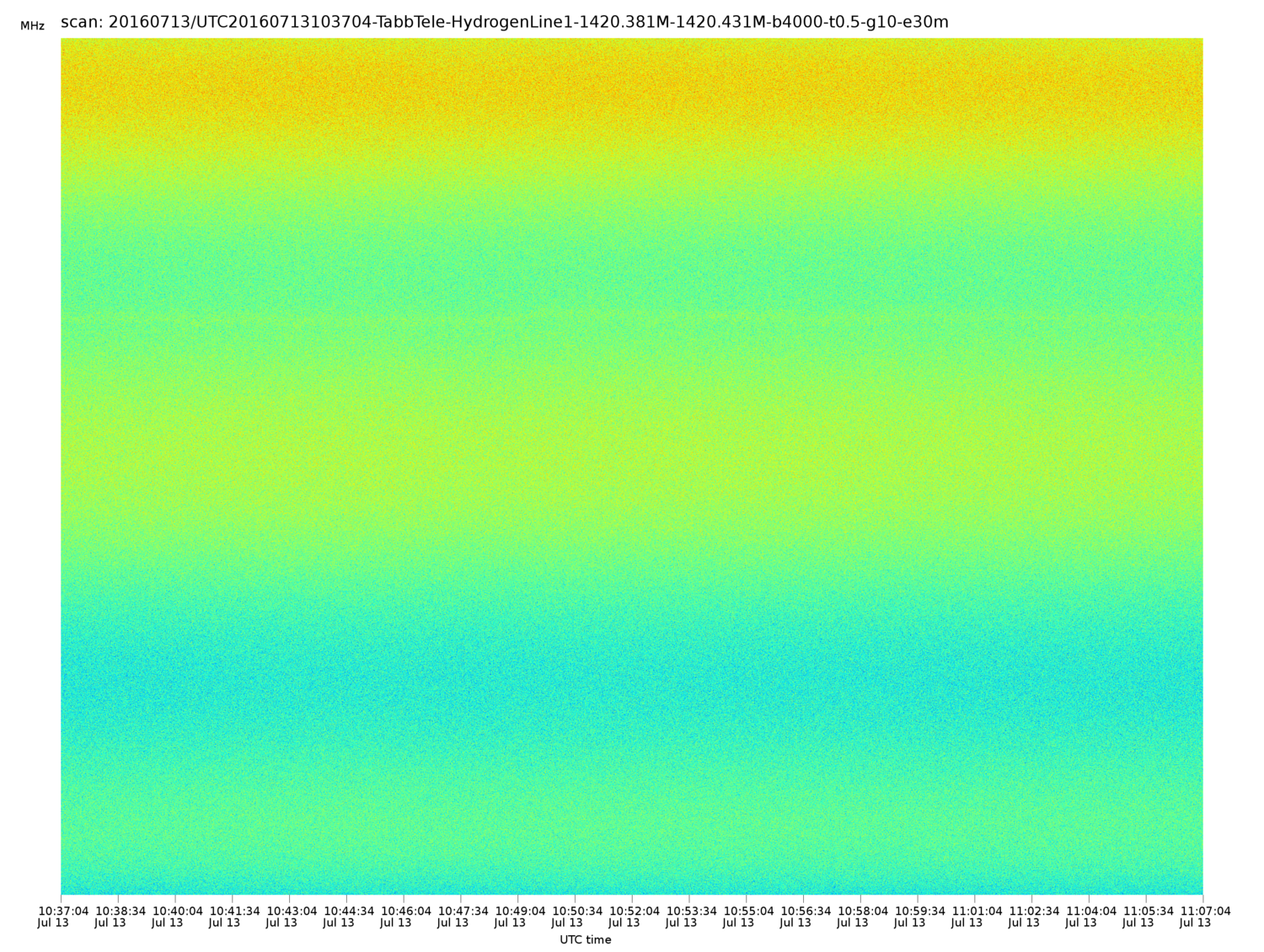Radio Astronomy
I had the goal of building a simple radio telescope to observe the Hydrogen Line. The Hydrogen line is the name of the specific spectral line created by neutral hydrogen atoms in space as they change energy levels. The electromagnetic radiation emitted to create the spectral line occurs at 1420.405MHz, this region of microwave is resilient enough to the conditions on the way to earth such that they are the most commonly observed spectra in amateur Radio Astronomy.
The hardware required to complete this project included:
• Raspberry Pi 3
• USB Software Defined Radio
• Low Noise Amplifier
• Line Amplifiers
• A Coaxial Power Source
• Several Coaxial Cables/Adapter
• Coaxial Power Inserter
• 18in Satellite Dish
• Power Strip/Adapters
The most exciting data plot: signal power around the frequency of the hydrogen line for a given area of the sky as the earth rotated and moved in orbit over a 15 hour period.
In order to actually gather and transform the unprocessed radio data, I primarily used the Linux based command line tool Radio Astronomy FFTW, and secondarily used other open source command line tools from the GNU-Radio project.
One piece of data gathered from my telescope are spectrograms like the one below of the hydrogen line from several consecutive 30 minute scans between 1420.381MHz and 1420.431MHz.
While I didn't follow any one guide exactly, I did use many for reference including: A 21cm Radio Telescope for the Cost-Conscious, Summer project: Build a radio telescope at home, Radio-astronomy with RTL-SDR, RaspberryPI and Amazon AWS IoT, and /r/RTLSDR/.
Spectrogram of the hydrogen line from several consecutive 30 minute scans between 1420.381MHz and 1420.431MHz.



